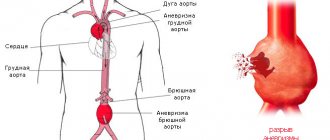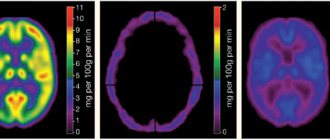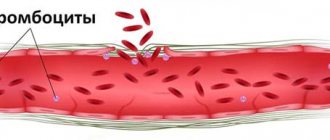The carotid artery is considered one of the large vessels in the human body that supplies blood to the brain. Since ancient times, people have been looking for ways to put a person to sleep. We managed to find out what would happen if we pressed on the carotid artery, which is located in the neck. Interesting? Then read on.
The carotid artery is an important blood vessel that transports 70% of oxygenated blood from the heart to the brain.
Anatomy of an artery
You need to know that the carotid artery arises from the aorta. Afterwards there is a division into the right and left common branches. This is necessary to cover the entire neck area on both sides for the necessary oxygen supply to brain cells. At the level of the Adam's apple, each artery is divided again: into external and internal branches.
The internal artery runs along the temple, enters the opening of the skull and there divides into a network of vessels. This allows you to provide every brain cell with oxygen.
The outer branch goes to the chin and goes up to the face and eyes to nourish these organs.
“The MHL matches on March 15 will be held in support of Timur Fayzutdinov”
On March 14, Timur’s mother Elena told the portal 76.Ru that they wanted to transport the hockey player to Moscow: “We understand that this is a risk, but we have to take a risk... They just (Yaroslavl doctors - approx. AiF.ru) told me that with this type of injury working for the first time. And with his injury, special equipment is needed, neurosurgery is needed.”
It is planned that the hockey player will be taken to the capital’s Burdenko Neurosurgical Institute, where there are all conditions for the treatment of such injuries.
The Youth Hockey League and MHC Dynamo (St. Petersburg) issued a joint statement regarding the current situation, which states: “On March 12, in the 1/8 finals of the Kharlamov Cup between Yaroslavl Loko and MHC Dynamo St. Petersburg, the puck The throw from the middle zone hit the head of Dynamo defender Timur Fayzutdinov. The referees immediately stopped the game, the team doctor and the ambulance crew provided first aid to the hockey player. Timur was promptly taken to the Solovyov hospital in Yaroslavl, where he is currently staying and where he is receiving all the necessary medical care. MHL matches on March 15 will be held in support of Timur Fayzutdinov. Out of respect for the privacy of the family and compliance with medical confidentiality requirements, the MHL and the MHC Dynamo St. Petersburg club do not comment on inquiries about the player’s health.”
According to Timur’s relatives, the federation, league and club are providing all possible assistance.
19-year-old Faizutdinov has been playing with Dynamo in the Youth Hockey League since 2021. In the regular season, he played 52 matches, making 7 assists.
Place of artery pulsation
Many people know that if a person loses consciousness, they need to check the pulse in their neck. This is where the external carotid artery can be felt.
It is worth placing two fingers just below (2-3 cm) the edge of the jaw, next to the large cervical muscle. The fingertips will feel the pulsation of the vessel wall. This skill is necessary for measuring heart rate, since it is not always possible to feel the pulse on the wrists.
What if you press too hard on the carotid artery? This will only worsen the person's condition. The pressure should be gentle so as not to block blood access to the brain even for a short period.
What happens when pinched?
Why was the carotid artery called “carotid”? The definition appeared for a reason. Even in the distant past, people noticed that when a person’s throat is compressed, loss of consciousness can occur. At first, this was associated with the fact that the airways were being compressed, but after conducting research and experiments, they discovered the reason, which lies in the arteries that supply the brain with blood. What happens if you press on the carotid artery?
First, if the compression is short-lived (approximately 10-30 seconds), the person will lose consciousness. This is due to a decrease in the amount of oxygen, so the person passes out. This is due to the saving of energy resources to preserve the vitality of the body. By pressing on the carotid artery, it is quite easy to put a person to sleep. This method was used in the past for operations - a kind of anesthesia to reduce pain.
Secondly, if the artery is clamped for more than one minute, irreversible consequences may occur to the brain tissue due to a lack of oxygen and nutrients. This often leads to death.
Answers to your questions
- Question: How can I check that my prosthesis is working correctly?
Answer: After implantation of the prosthesis, the symptoms and signs that preceded surgical treatment will become significantly less and, in many cases, completely disappear. If symptoms and signs do not return or worsen, it is safe to say that the prosthesis is working normally.
- Question: What will happen to my vascular system if the prosthesis stops working properly?
Answer: The organ or tissue supplied by this prosthesis will gradually or suddenly receive less blood. In this case, typical symptoms and signs (depending on the area where the prosthesis is located) will develop. For example, increased pain when walking or decreased walking distance without pain, or cold feet.
- Question: How often does my vascular graft need to be replaced?
Answer: Your prosthesis was designed to last indefinitely. But as mentioned above, in some cases the operation of the prosthesis may be disrupted. If this happens, you will need to replace the prosthesis, but the decision is made individually in each specific case. There is a small risk that the prosthesis may become infected. We guarantee that when the prosthesis is implanted, it is absolutely sterile. The operation is also carried out under conditions of the greatest possible and strictest sterility. In very rare cases, infection can still spread to the prosthesis from your skin or from the air in the operating room. This may have no effect, but if the prosthesis becomes infected, it should be removed.
- Question: Can the prosthesis be affected by external energy influences, such as running engines, microwave ovens, airport security checks, sunbathing, etc.?
Answer: No
- Question: Should I reduce my activity level?
Answer: Only your attending physician can decide the level of individual restrictions. He knows your health condition and the location of the prosthesis. After implantation of a vascular prosthesis, as a rule, the patient can return to a completely normal and active life. However, when implanting a prosthesis, your doctor may restrict you from certain activities, such as sports, lifting weights, or gardening, until the prosthesis is fully integrated into the vascular system.
- Question: Should I limit my walking?
Answer: Dosed walking is not harmful, but even beneficial. Physical activity on the legs will prevent atrophy (reduction in volume) of the muscles through which small arteries pass. The greater the muscle mass, the more blood vessels will form. Set a walking rhythm for yourself (for example, 60 steps per minute) and try to walk a certain distance every day. Walk until pain appears in your leg muscles. There is no need to walk while overcoming the pain - the pain causes a spasm of the arteries. Record in the table the number of steps that you managed to walk without pain, and you will see that it gradually increases.
- Question: Can I smoke?
Answer: You should not smoke. It has been irrefutably proven that smoking has a negative impact on the long-term results of the vascular prosthesis, as well as on the condition of your own arteries in general.
- Question: Can I stop taking my medications for a while?
Answer: Some drugs used in the treatment of atherosclerosis are taken in courses of 2-3 months, others - continuously. Only your attending physician can decide in what dosage and according to what scheme they should be used. In some cases (for example, during an upcoming surgery), it is advisable to stop taking certain medications for a while or replace them with others. In any case, inform your attending physician about your illness and the medications you are taking.
- Question: How about reducing my sexual activity?
Answer: Only if the doctor recommends that you reduce sexual activity. In all other cases there is no need for any restrictions.
- Question: Can I continue to drive my car?
Answer: In most cases, yes. But you should always consult your doctor.
- Question: If I develop an infection or have surgery, do I need to take special precautions?
Answer: It has been proven that even with such ordinary manipulations as dental treatment, a temporary release of microbes into the blood can occur. If these agents come into contact with the prosthesis, it may become infected. Therefore, if you have an infectious disease, if you are undergoing a minor operation, for example, treatment or tooth extraction, cystoscopy, fibrogastroscopy or intestinal examination, you should definitely consult your doctor about taking antibiotics.
How to stop bleeding?
What happens if you press on the carotid artery in time with open neck injuries and obvious bleeding? This will save a person's life. Death from bleeding from this vessel occurs in a matter of minutes. Since the pressure inside them is very strong, death if damaged will occur in 1-2 minutes.
How to properly press on the carotid artery to save life? To do this, you need to apply a pressure bandage to the injury site. Raise the opposite arm behind your head so that your forearm rests on the top of your head. Using a bandage or twisted gauze, you need to firmly press down the artery, and then tape the patient’s hand to the neck. This will create enough pressure on the injury site to stop the bleeding.
Paramedics also use the technique of applying a tourniquet to the carotid artery. This is a rather complex method that should be performed by a specialist with experience in carrying out such manipulations.
What is the reason?
When talking about the occurrence of atherosclerosis and other cardiovascular diseases, experts usually do not use the word “cause”. Instead, they use the concept of “risk factor,” that is, a factor that significantly increases the likelihood of developing a disease. The concept of “risk factor” includes habits, living conditions, age and gender. Taking into account all risk factors allows us to develop optimal recommendations for the prevention and treatment of cardiovascular diseases. Risk factors for the development of atherosclerosis include:
- age (over 40-50 years)
- male
- genetic predisposition
These risk factors, as you understand, are irreversible. That is why, if you are a man older than middle age, you should pay special attention to eliminating other risk factors that are fully or partially reversible:
- smoking
- high blood pressure (above 140/90 mm Hg)
- obesity
- high blood cholesterol
- diabetes
- low physical activity
- mental and emotional stress
Eliminating risk factors significantly reduces the likelihood of developing atherosclerosis and even delays the progression of an existing disease. Therefore, we can say with confidence that the prevention of atherosclerosis largely depends on ourselves. A healthy lifestyle, quitting smoking, reasonable physical activity, proper nutrition are the simplest and most effective ways to combat the disease. Assess your risk factors and draw a conclusion. If you smoke and are overweight, or your blood pressure is high, pay more attention to your diet. It is also useful to know the level of cholesterol in the blood. Normal cholesterol content is no more than 5.2 mmol/l. Cholesterol levels greater than 6.5 mmol/l require a combination of diet and drug therapy.
Using the compression technique
In many types of martial arts, fighters know how to put a person to sleep by pressing on the carotid artery. This technique allows them to render the enemy unconscious for a quarter of a minute. It only takes 15 seconds for a person to fall asleep. But this technique remains prohibited, because it cannot always be performed correctly.
Many people do not understand what happens if you press on the carotid artery. Especially teenagers. Therefore, you should not joke with squeezing the neck and its arteries in order to protect yourself and the other person from fatal complications.
It is useful to know what happens if the carotid artery is compressed. But it's not that useful to practice it. Just a few extra seconds without oxygen for the human brain can turn into a terrible tragedy.










